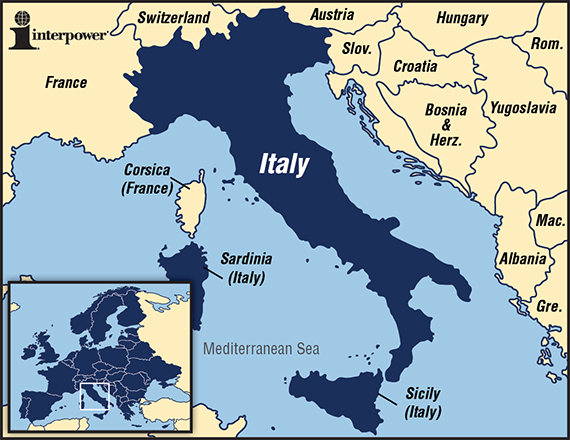Exporting to Italy
Posted on 4/11/16 12:00 AM

| ITALY | |
|---|---|
| Actual population* | Population world ranking |
| 61,680,122 | 24 |
| Actual GDP (PPP)* | GDP world ranking |
| $1.805 trillion | 12 |
| Actual GDP (per capita)* | GDP (per capita) world ranking |
| $29,600 | 51 |
*See the end of this blog for definitions
Many companies in Italy are starting to expand their markets globally, so there are numerous business opportunities to be explored.
Italy is a member of the European Union. Market entry strategies include finding the right individual distributor or business partner to help create a network of relationships. Learn what the local business guidelines and regulations are. Companies need to make sure that all contracts made are in agreement with the EU and member state national laws. Find the appropriate legal advice to assist with that. Italy also hosts a number of trade shows which draws worldwide interest in a number of areas.
Knowledge of Italian business customs is important. Learn what is considered key to good company relationships, such as attire, making and keeping appointments, how to properly address people, and the importance of establishing positive business associations. Keep to all promised delivery dates where possible and follow-up with after-sales service.
There are a variety of resources available to learn more about market entry strategies, doing business in Italy, business customs, and import/export requirements. These include the United States Commercial Service and the United Kingdom Trade and Investment.
Located in Southern Europe, Italy joined the European Union in 1958 and was one of the original EU member countries. The EU is a Customs Union which consists of member countries who have formed a single region for customs purposes. Goods that have been imported legally can circulate throughout the EU with no further customs checks. To learn more about the customs regulations, among the sources to consult are the European Commission Export Helpdesk and European Commission Taxation and Customs Union. Conducting due diligence in accordance with all of the regulations is essential.
Some products may require safety testing and certification for this market. While not all products are required to have a CE mark, others do require one. When affixing the CE mark to a product, a manufacturer affirms that the product meets the necessary requirements and can be sold throughout the EU.
There are also EU regulations that need to be followed, so it’s important to know what is required in Italy. Among them are:
- REACH is the European regulation for Registration, Evaluation, Authorization, and Restriction of Chemicals. The European Commission works closely with ECHA (European Chemicals Agency) in the implementation of this regulation.
- RoHS stands for Restriction of Hazardous Substances. It restricts the use of certain hazardous materials found in electrical and electronic products.
- WEEE stands for Waste from Electrical and Electronic Equipment. WEEE requires the treatment, recovery, and recycling of electric and electronic equipment.
The official language is Italian. Even though some large companies may have communication in various languages, correspond in Italian to begin with. This helps to prevent possible misinterpretations. Company literature and other business information should be printed in Italian.
In Italy, the voltage used is 230V at 50Hz. The most frequently specified plug pattern is the Italian plug.
Sources:
www.export.gov/italy
www.gov.uk
Sources for the European Union:
www.ec.europa.eu
www.echa.europa.eu
www.rohsguide.com
www.exporthelp.europa.eu
www.europa.eu
www.export.gov/europeanunion
*Source: www.cia.gov/library/publications/the-world-factbook/index.html
Country comparison—Population: Population compares estimates from the US Bureau of Census based on statistics from population censuses, vital statistics, registration systems, or sample surveys pertaining to the recent past and on assumptions about future trends. (July 2014 est.)
Country comparison—GDP (Purchasing Power Parity): GDP (purchasing power parity [PPP]) compares the gross domestic product (GDP) or value of all final goods and services produced within a nation in a given year. A nation’s GDP at PPP exchange rates is the sum value of all goods and services produced in the country valued at prices prevailing in the United States. (2013 est.)
Country comparison—GDP – per capita (PPP): GDP – per capita (PPP) compares GDP on a purchasing parity basis divided by population as of 1 July for the same year. (2013 est.)




